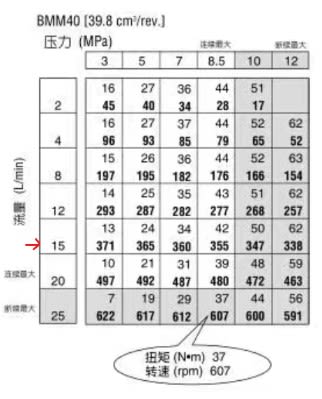dawz
Mechanical
- Feb 26, 2024
- 23
Hi guys,
I have a water pump (A) with the rated power of 5kW.
Water pump (A) will be directly driven by a hydraulic motor (B) via a coupling.
From datasheet, hydraulic motor (B) runs at 13Nm and 371rpm at 15L/min.
If I use the power formula P = Tor. (Nm) x Rotation Speed (rpm) / 9549:
Power of Hydraulic Motor (B)
= 13 x 371 / 9549
= 0.505kW
Is the formula correct that my hydraulic motor (B) of 0.505kW is not able to drive the water pump (A) with the requirement of 5kW, even if my engine is close to 50HP?
I have a water pump (A) with the rated power of 5kW.
Water pump (A) will be directly driven by a hydraulic motor (B) via a coupling.
From datasheet, hydraulic motor (B) runs at 13Nm and 371rpm at 15L/min.
If I use the power formula P = Tor. (Nm) x Rotation Speed (rpm) / 9549:
Power of Hydraulic Motor (B)
= 13 x 371 / 9549
= 0.505kW
Is the formula correct that my hydraulic motor (B) of 0.505kW is not able to drive the water pump (A) with the requirement of 5kW, even if my engine is close to 50HP?

